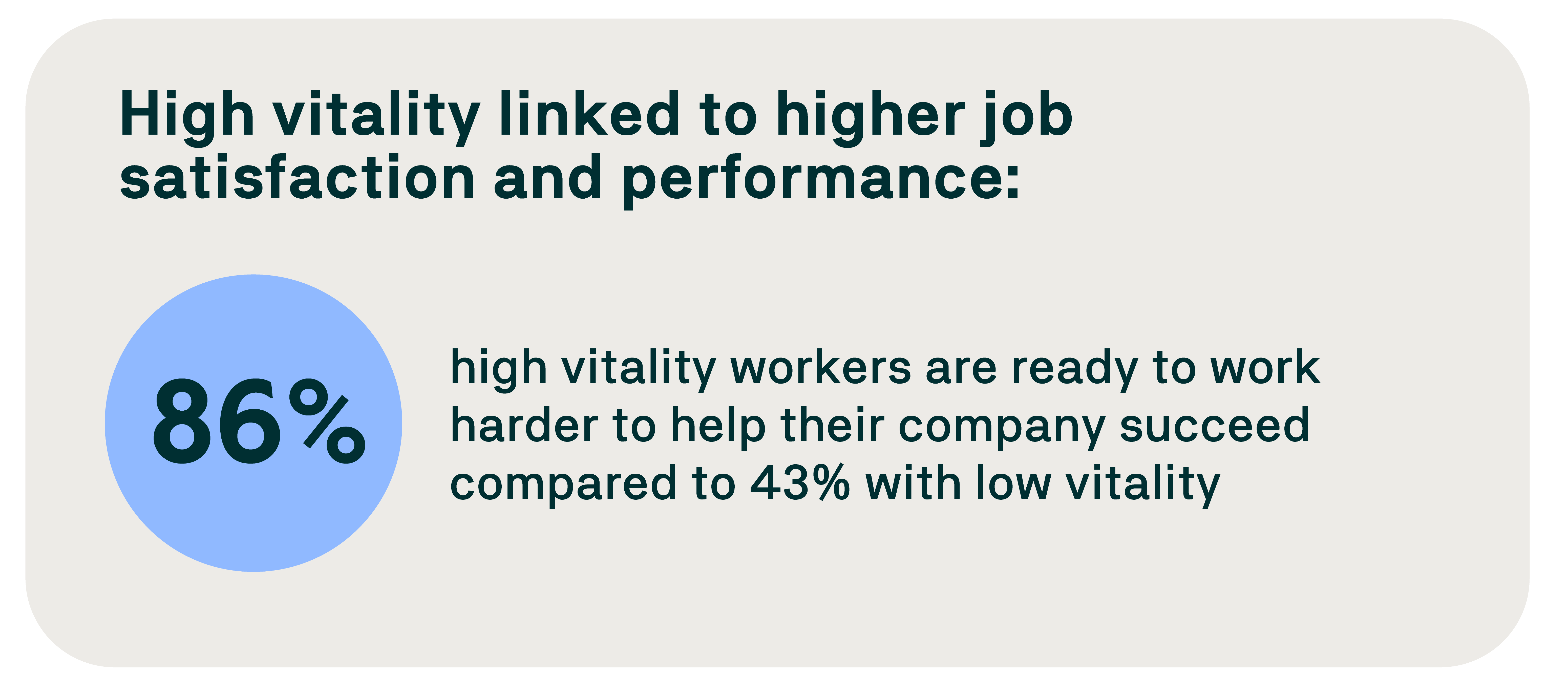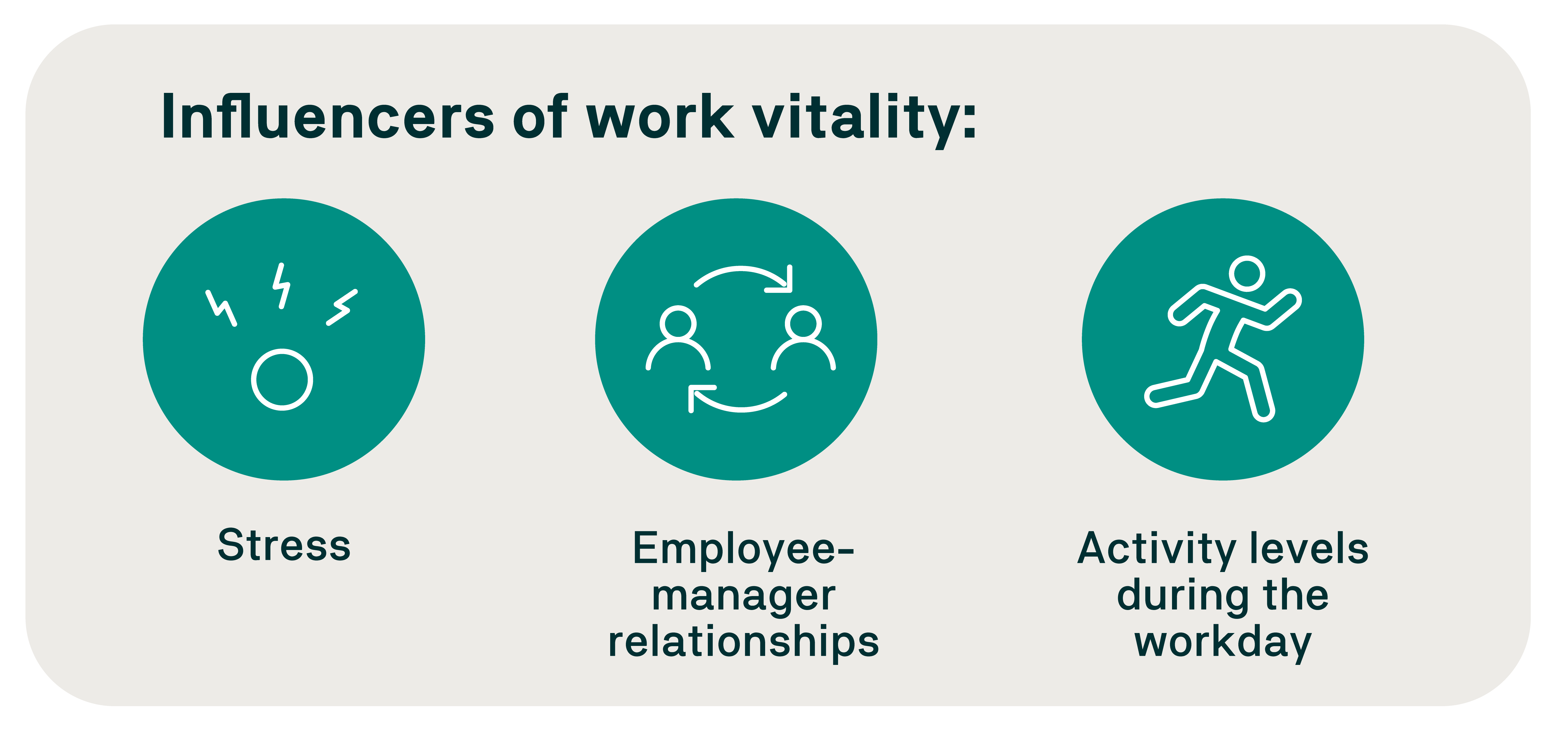In today’s fiercely competitive business world, workforce vitality is a key driver of success. This important insight is highlighted in our third annual 2024 Vitality in America report, based on a survey of 7,500 adults in the U.S. The study investigates how work impacts an individual’s vitality ‒ their health, strength, and energy ‒ and explores the relationship between employee health, vitality, and job performance. The results show that vitality significantly influences employee productivity, engagement, and satisfaction, which has a direct impact on an organization’s overall performance.
Vitality trends: Workers vs. non-workers
Consistent with past findings, employed individuals show higher average vitality levels than adults who are unemployed and not retired. Employed people excel across all eight dimensions of health that comprise the Evernorth Vitality Index (EVI): physical, social, emotional, financial, intellectual, environmental, occupational, and purpose. Workers generally have a more positive perception of their health and are more likely to engage in healthy habits, such as obtaining quality sleep, which is crucial for overall well-being.

Vitality gaps
Despite the general trend of higher vitality among workers, significant disparities exist. Differences in vitality levels are apparent across generations and genders. For example, Baby Boomers exhibit the highest vitality levels, while Gen Z employees, who are anticipated to become the largest segment of the U.S. workforce by 2030, display the lowest. Gen Z workers often experience lower confidence and feel less capable in their roles, with many feeling satisfied in their positions but lacking the enthusiasm seen in older generations. However, the research found reasons for optimism: Gen Z adults are gradually acquiring the skills needed for a healthy life, are feeling more in control during stressful times, and are becoming more optimistic.

As was the case in previous years, women in the workforce report lower vitality than men. Key vitality metrics for women have been on the decline since 2022, with lessening job satisfaction and decreasing feelings of competence, autonomy, and relatedness.
High vitality and job performance
Employees with high vitality exhibit greater engagement and willingness to exceed expectations at work. They also are more likely to progress in their careers and to receive raises, promotions, and recognition. One significant finding is the gap in presenteeism rates between employees with low vitality and those with high vitality. Presenteeism, where employees are physically present at work but not fully productive due to health or personal issues, represents a significant cost to companies.

Impact of stress, manager relationships, and activity levels
While some work-related stress is unavoidable, chronic stress can have detrimental effects. The research shows that the 25% of employees who frequently feel stressed at work have significantly lower vitality compared to their less stressed colleagues. These stressed employees report lower job satisfaction, diminished confidence, and reduced productivity.
Positive relationships with managers also are crucial. In 2024, 74% of employees with high vitality felt understood by their manager, compared to just 17% of those with low vitality. Strong manager relationships positively affect all aspects of the manager-employee dynamic, enhancing vitality.
Activity levels during the workday also play a significant role in vitality. Employees who sit for six or more hours a day report lower vitality, poorer health, and fewer healthy habits compared to more active colleagues. Notably, 1 in 6 workers sits during their entire eight-hour workday. These sedentary workers report poorer health, higher rates of mental and physical health issues, reduced physical activity outside of work, poor sleep quality, the lowest job satisfaction, and the highest stress levels.

The boomerang effect
The research found a positive feedback loop between vitality and work. Factors such as work stress, job satisfaction, manager relationships, and the work environment significantly influence vitality. High vitality leads to increased productivity, better job performance and satisfaction, and career growth.
By recognizing and addressing the factors that affect vitality ‒ such as the need for competence, autonomy, and relatedness at work ‒ employers can enhance workforce vitality and improve organizational performance.
This article was created with the assistance of AI tools. It was reviewed, edited, and fact-checked by Evernorth’s editorial team and subject matter experts.



